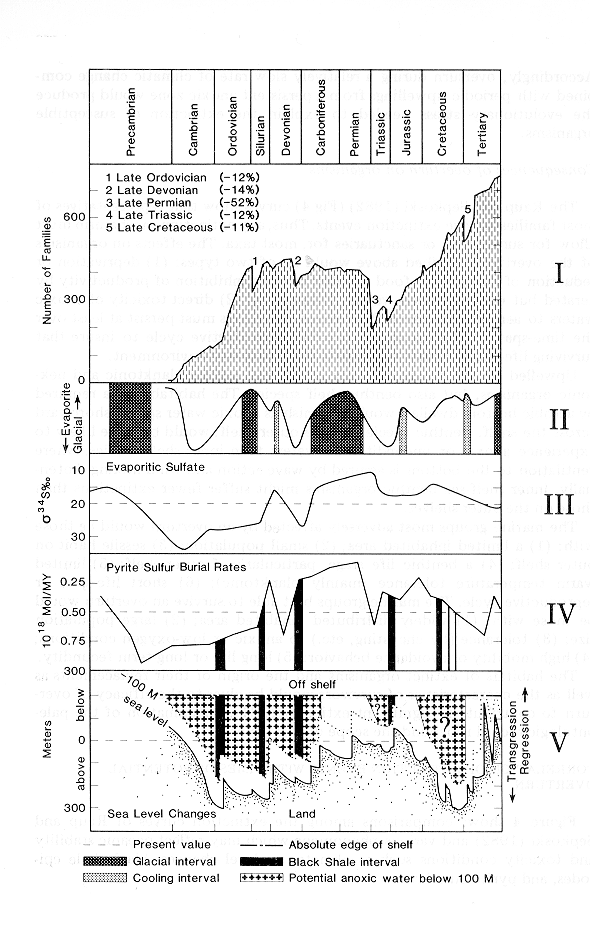
Row II. Climatic history as a function of glacial (cold) and evaporite (warm) intervals. Curve after
Meyerhoff (1970). Glacial and cooling episodes after Frakes (1979).
Row III. Sulfur isotope fractionation in evaporites (after Holser, 1977). Enrichment implies warm climate and depletion with respect to present (dotted line) implies colder climate.
Row IV. Pyrite burial rates in 10~8 moles per million years (after Berner and Raiswell, 1983). Bars represent time-synchronous black-shale events: Paleozoic shelf from Berry and Wilde (1978), Jurassic shelf from Hallam (1977), and Cretaceous deep-sea from Arthur (1979) and Jenkyns (1980).
Row V. Global sea level and shelf conditions. Stipple pattern = land; solid line = sea level through time; dashed line = projection of present sea level (= 0 m); dotted line = 100 m below sea level, the minimum depth of ventilation of shelf waters or the top of any potential anoxic layer; dot--dash line = absolute seaward limit of shelf (--200 m at present) assuming constant continental freeboard (Hess, 1962; Wise, 1972). Vertical line (Geochron) from sea level to absolute edge of shelf indicates average width of shelf. Cross pattern = potential anoxic waters on shelf; bar pattern = black-shale events on shelf (see row IV). Open pattern seaward of shoreline = aerated shelf.